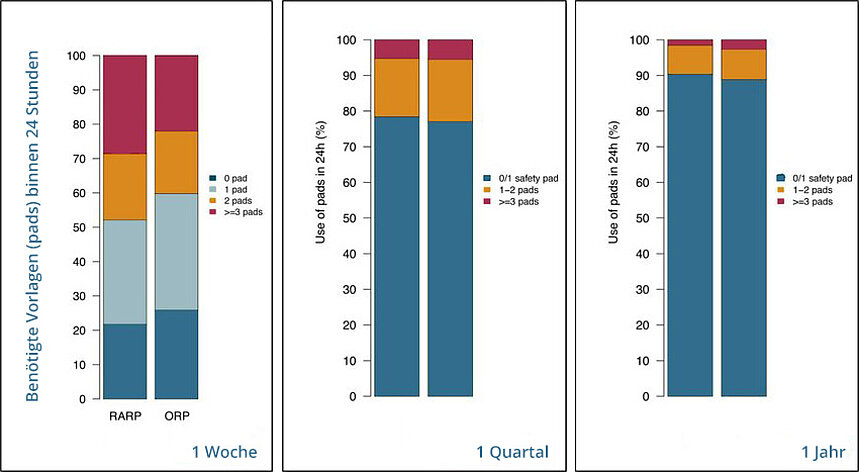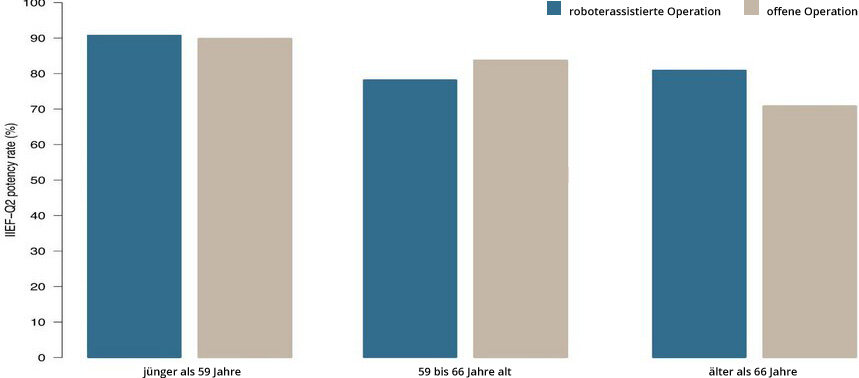Potency
There is still the issue of potency. If we define potency using the question of whether or not a patient can have sexual intercourse, the majority of our patients whose nerves on either side of the prostate were spared during surgery can answer in the affirmative.
The table shows the current potency rates for more than 10,000 of our patients whose pre-operative potency was preserved as both nerve bundles were spared. You should treat these outcomes as a guide. Our statistical analysis showed no significant difference in outcomes between different surgical techniques for patients under 59 years old. There was a slight discrepancy in favour of robotic-assisted surgery in older patients.



